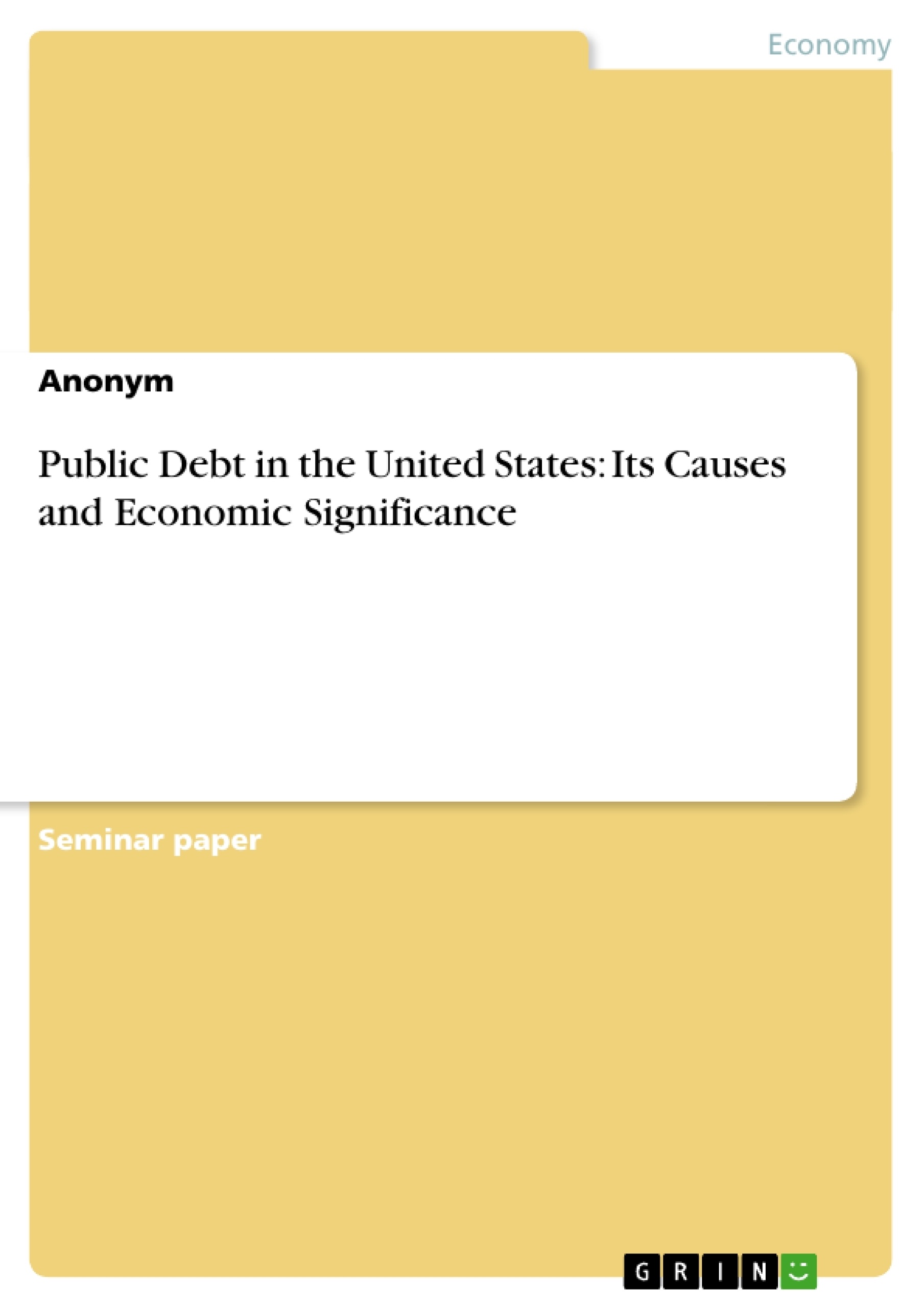A nearly consistent trend of soaring deficit spending in order to “bridge the gap between tax revenues and spending outlays” (Cashell, 2010) resulted in a tremendous accumulation of public debt in the United States over the last decades. Public debt, defined as “the external obligations of the government” (OECD, 2001), has a major effect on an economy’s development. As the U.S. public debt is increasingly seen as “hold[ing] back growth” (Economist Intelligence Unit, 2011) and causing economic decline (Elliot, 2011), it is worth examining its causes and economic significance in the world’s largest economy. This essay will examine the economic significance and influential factors causing the consistent increase of public debt in the United States. A discussion of future developments and recommended procedures is thus, beyond the scope of this essay. An assessment on the status quo will first be made on the basis of exogenous drivers in connection with its economic affects, followed by an examination of the potential internal factors of the problem.
Inhaltsverzeichnis (Table of Contents)
- Introduction
- Public Debt in the United States
- Exogenous Factors
- Endogenous Factors
- Conclusion
Zielsetzung und Themenschwerpunkte (Objectives and Key Themes)
This essay explores the causes and economic significance of the ever-increasing public debt in the United States. It aims to shed light on the factors contributing to this issue, both external and internal to the country's economic system. Key themes include:- The impact of the 2008 financial crisis on public debt
- The role of fiscal policy in driving debt accumulation
- The influence of structural fiscal imbalances on the U.S. economy
- The potential consequences of the public debt for the country's creditworthiness and economic growth
- The need to examine both external and internal factors contributing to the debt problem
Zusammenfassung der Kapitel (Chapter Summaries)
The essay commences by introducing the concept of public debt in the United States and its significance in shaping the country's economic landscape. The analysis then proceeds to examine the factors contributing to the increasing public debt, focusing first on exogenous drivers such as the global financial crisis of 2008. These external shocks led to significant government spending initiatives, including financial bailouts and stimulus packages, which ultimately contributed to a surge in public debt.
The essay subsequently delves into the potential role of endogenous factors in the public debt problem. The discussion centers on fiscal policy and its contribution to debt accumulation. This includes examining the impact of tax code provisions, such as the mortgage interest deduction, which may incentivize borrowing. The essay also explores how tax distortions can influence leverage in the economy and how short-term, politically driven decisions regarding tax cuts and spending can exacerbate the debt situation.
While the essay does not explicitly address the future outlook or potential solutions to the public debt challenge, it concludes by highlighting the complex nature of the problem and the need for further research to understand the potential consequences of the debt for the financial world and the U.S. economy.
Schlüsselwörter (Keywords)
The primary focus of this essay lies on understanding the factors behind the public debt problem in the United States. Key terms and concepts include public debt, economic significance, exogenous and endogenous factors, fiscal policy, financial crisis, tax distortions, and creditworthiness.- Citation du texte
- Anonym (Auteur), 2012, Public Debt in the United States: Its Causes and Economic Significance, Munich, GRIN Verlag, https://www.grin.com/document/200271



